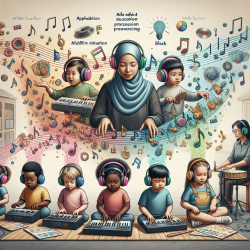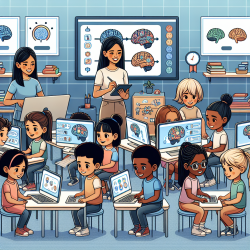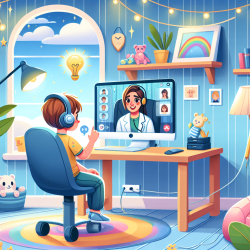The intersection of music and language development in early childhood presents a fascinating area of study with practical implications for educators and therapists working with young children, particularly those who are hearing impaired. Drawing from the insights provided by Sandra E. Trehub in the research article "Infants' Perception of Musical Sequences: Implications for Language Acquisition," this blog explores how practitioners can utilize the outcomes of this research to improve their skills and encourage further exploration into the auditory development of children.
Music, with its rich, structured sequences of sounds, offers a unique medium through which children perceive and process auditory information. Trehub's research suggests that infants have a natural ability to recognize melodic contours, or the relative directional movement of notes in a melody, which is crucial for melodic recognition. This ability to process the contour of melodies rather than the absolute pitch of individual notes may parallel how infants process speech, highlighting the potential for music to support language development.
For practitioners working with hearing-impaired children, these findings underscore the importance of early identification and intervention. The research suggests that hearing-impaired children, when provided with appropriate amplification within the first six months of life, can experience infant-directed speech in a developmentally appropriate manner. This early exposure can be critical for their auditory development and subsequent language acquisition.
Here are some practical ways practitioners can apply these insights:
- Integrate Music into Therapy: Incorporate musical activities that emphasize melodic contours and rhythmic patterns into therapy sessions. This can enhance auditory discrimination skills and lay a foundation for processing speech.
- Parental Involvement: Educate parents on the importance of using infant-directed speech that emphasizes pitch contours and rhythmic patterns. Encouraging parents to sing and use musically-inflected speech can support their child's auditory and language development.
- Use of Technology: Employ technology and apps designed to enhance musical perception in children. These tools can provide a fun and engaging way for children to interact with music and improve their auditory processing skills.
- Further Research: Encourage ongoing research and collaboration between educators, therapists, and researchers to explore the benefits of music on language development further. This collaborative approach can lead to the development of innovative strategies and tools.
In conclusion, the research presented by Trehub opens up exciting possibilities for enhancing language acquisition through the strategic use of musical sequences. By understanding the parallels between music and language processing, practitioners can develop more effective interventions that capitalize on the natural tendencies of infants' auditory perception. This not only benefits hearing-impaired children but also offers insights into general language development strategies that can benefit all children.
To read the original research paper, please follow this link: Continuing Peer Commentary. Response to "Infants' Perception of Musical Sequences: Implications for Language Acquisition" by Sandra E. Trehub.










